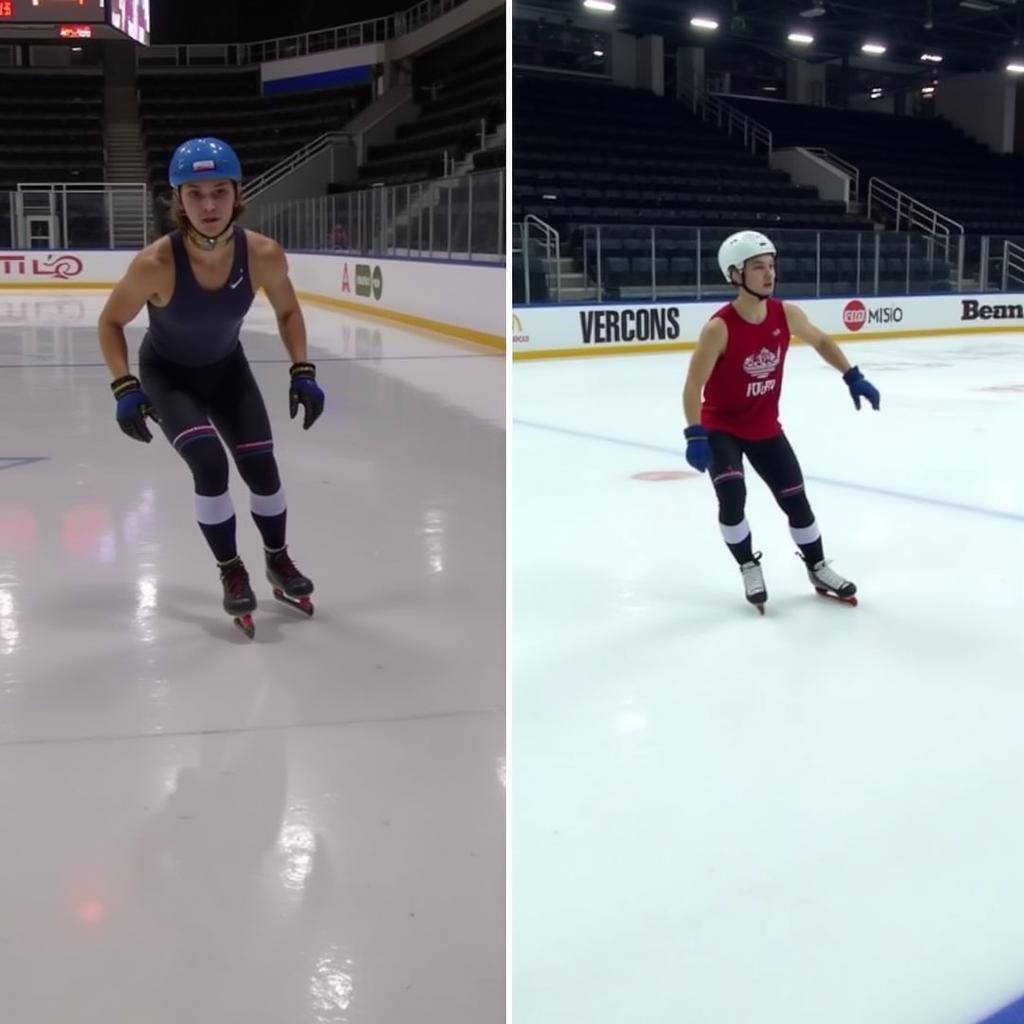Speedskating, a sport traditionally associated with colder climates, is finding its footing in the tropical heat of Southeast Asia. A relatively new addition to the ASEAN sporting landscape, Ase Speedskating is steadily gaining popularity, attracting a growing number of athletes and fans. This burgeoning interest presents both exciting opportunities and unique challenges for the region.
The Rise of ASEAN Speedskating
Despite the lack of natural ice rinks, the ASEAN region has witnessed a surprising surge in interest in speedskating. Driven by a desire for diverse sporting options and inspired by international competitions, athletes are taking to the ice, albeit artificially created ones. The introduction of inline speedskating, a more accessible alternative, has further fueled this growth, allowing enthusiasts to train and compete even in countries without dedicated ice rinks. This adaptability has been key to the sport’s development in ASEAN.
Overcoming the Hurdles: ASEAN Speedskating Development
The challenges faced by ase speedskating are numerous. Limited infrastructure, a lack of experienced coaches, and the high cost of equipment pose significant obstacles. Furthermore, the sport’s relatively low profile compared to established regional favorites like football and badminton makes securing funding and sponsorships difficult.
However, despite these challenges, progress is being made. Several ASEAN nations are investing in ice rinks and training facilities. International partnerships are being forged to provide coaching expertise and athlete development programs. National federations are actively promoting the sport at the grassroots level, aiming to cultivate a new generation of speedskaters.
Competitive Spirit on the Ice: ASEAN Speedskating Competitions
ASEAN speedskating is slowly but surely carving its place on the international stage. Athletes are increasingly participating in regional and international competitions, gaining valuable experience and exposure. While medals may still be elusive, the focus is on improvement, sportsmanship, and building a strong foundation for the future.
From Inline to Ice: Transitioning and Training for Success
Many ASEAN speedskaters begin their journey with inline skating, a more accessible entry point to the sport. The transition to ice, however, requires significant adaptation and specialized training. Developing the necessary balance, technique, and speed on ice is crucial for competitive success.
 An ASEAN speedskater transitions from inline to ice skating, highlighting the challenges and adaptations involved.
An ASEAN speedskater transitions from inline to ice skating, highlighting the challenges and adaptations involved.
The Future of ASEAN Speedskating
The potential for growth in ase speedskating is immense. As infrastructure improves and awareness grows, the sport is likely to attract a wider audience. The increasing popularity of winter sports globally, coupled with the region’s youthful demographic, provides a fertile ground for development. With continued investment and dedication, ASEAN speedskating could one day become a force to be reckoned with on the international stage.
Inspiring a New Generation: The Impact of ASEAN Speedskating
Beyond the competitive aspect, ase speedskating promotes important values such as discipline, perseverance, and teamwork. It provides opportunities for young athletes to pursue their passions, represent their countries, and inspire others to embrace new challenges.
“The growth of speedskating in ASEAN is a testament to the region’s dynamism and adaptability,” says Dr. Wei Ming, a prominent sports analyst based in Kuala Lumpur. “Despite the inherent challenges, the dedication of athletes and the commitment of national federations are paving the way for a bright future.”
In conclusion, ase speedskating is a sport on the rise in Southeast Asia. While challenges remain, the growing interest, coupled with ongoing development efforts, paints a promising picture for the future. The sport is not only fostering a new generation of athletes but also promoting valuable life skills and inspiring regional pride.
FAQ:
- What is ase speedskating?
- How can I get involved in speedskating in ASEAN?
- Where can I find information about ASEAN speedskating competitions?
- What are the challenges facing speedskating in the region?
- How does inline speedskating contribute to the development of ice speedskating in ASEAN?
- Are there any scholarships or funding opportunities for aspiring speedskaters in ASEAN?
- What are the future prospects for ASEAN speedskating?
For further support, please contact us:
Phone: 0369020373
Email: [email protected]
Address: Ngoc Lien Village, Hiep Hoa, Bac Giang, Vietnam. We have a 24/7 customer service team.
